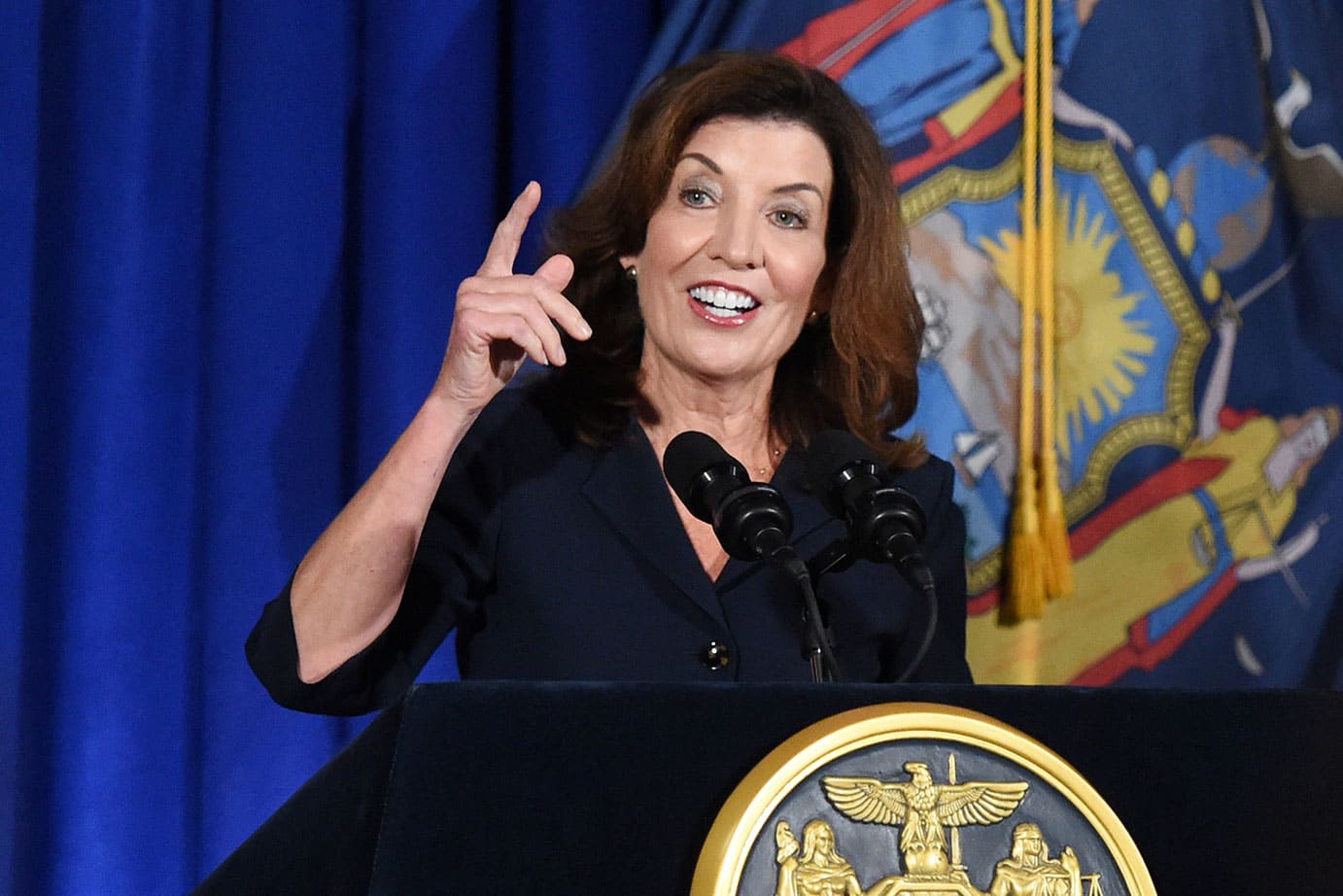NY Assembly Corroborates Cuomo Harassment Claims, Book Deal and Nursing Home Death Scandals
A 45-page report detailing the New York State Assembly’s investigation into former Gov. Andrew Cuomo’s alleged misconduct while in office has been completed and released to the public.
On Monday, Speaker Carl Heastie released the full report of what he called a “profoundly sad chapter in New York’s history.”
“The former governor’s conduct – as shown in this report – is extremely disturbing and is indicative of someone who is not fit for office. I hope this report helps New Yorkers further understand the seriousness of the allegations that have been made and serves to guide us to a more ethical and responsible government. New Yorkers deserve no less,” he continued.
An outside law firm hired to investigate Cuomo and his administration on behalf of the Judiciary Committee found the former governor engaged in multiple instances of sexual harassment, used state resources to write his book, and “was not fully transparent regarding the number of nursing home residents who died as a result of COVID-19.”
Read the Cuomo Report From the New York State Assembly
Investigators confirmed press reports that the state Department of Health wanted to exclude from its nursing home death totals thousands of patients who died after being transferred to hospitals.
“The investigation showed that as they were considering these matters, the book deal was going on, there’s a chapter in the book about nursing homes,” Assembly Member Phil Steck, a Democrat who represents part of the Albany area, said Friday. “They were trying to make it as what they thought was least damaging to the governor instead of just telling the truth.”
Cuomo administration officials, at the time, acknowledged that their nursing home fatality count was incomplete, but said that was only because it would take time to verify the data. Health officials insisted it was not an attempt to make the state’s death toll look better or protect Cuomo’s reputation.
Cuomo’s spokesperson, Rich Azzopardi, said Friday that the former governor and his team still hadn’t been allowed to see a copy of the Assembly report, or all the investigators’ evidence.
“The Assembly Judiciary Committee has chosen not to review their findings with us which is their prerogative, but it may once again result in a one-sided report,” Azzopardi said.
On the subject of Cuomo’s $5.1 million book deal, Steck said the report makes “very clear” that the then-governor violated conditions set by the state ethics committee, which had said Cuomo couldn’t use state resources or staff on the project.
Investigators found that Cuomo ordered some state employees to work on the book, and while some said they volunteered their private time to do so, Steck said “there wasn’t enough time in the day for it to be voluntary work and for them to still be able to work on official state business.”
Ethics commissioners this week rescinded their approval of Cuomo’s book deal.
Walsh, a former Saratoga assistant county attorney, said that could “open the door” to an ethics fine.
The final report comes months after Cuomo resigned in disgrace following the attorney general’s independent investigation into allegations of sexual harassment and inappropriate behavior by the governor during his tenure in Albany. The heads of the Assembly report, Speaker Carl Heastie and Judiciary Chair Charles Lavine, had previously announced the probe would be suspended once Cuomo resigned.
Criticism came swiftly from lawmakers on both sides of the aisle and a number of the governor’s accusers who felt it imperative to release the committee’s findings. Thee days later, the two Democrats reversed course and announced their intentions to release the report at the conclusion of their investigation.
Cuomo’s resignation in August stymied the law firm’s efforts to interview witnesses about the misrepresentation of nursing home data, according to Assembly Member Mary Beth Walsh, a Republican.
“I believe that the timing of the governor’s resignation really kind of truncated the investigation and the ability to investigate on that,” said Walsh, whose district includes parts of Saratoga and Schenectady counties. “Several individuals who were scheduled to be subpoenaed did not cooperate after the governor’s resignation.”
Cuomo faces ongoing probes from the state attorney general over his $5 million book deal and from state prosecutors, who are scrutinizing his handling of nursing home deaths data.
Since March, outside lawyers have been helping the committee conduct a wide-ranging investigation on whether there were grounds to impeach Cuomo, a Democrat. The announcement came on a day the Assembly had initially set as a deadline for Cuomo’s legal team to respond with any additional evidence refuting the allegations against him.
Some legal and political experts had said that while people still may be interested in a process that holds Cuomo accountable, it is unclear whether lawmakers have the legal authority to impeach him on his way out the door.
“I’m not sure what the purpose of impeachment is. Impeachment is to remove him from office,” said Bennett Gershman, a law professor at Pace University. “He’s got to be impeached and then convicted by the Senate, and that’s a lot of work, a lot of hours. You’d think that these New York state representatives have better things to do than sit in judgment of a governor who’s already resigned.”
The state Legislature — both chambers are controlled by Democrats — would have had to muster the political will to quickly move forward with impeachment hearings, Gershman said, and would only do so as a punitive act to bar Cuomo from again seeking state office and possibly strip him of the perks afforded to elected officials who leave under normal circumstances.
“I think that scenario is incredibly unlikely,” said Ross Garber, an attorney who has represented four recent U.S. governors facing impeachment proceedings in their respective states.
His reading of state law is that a person must be in office at the time of impeachment, citing discussions in 1853 by the Assembly Judiciary Committee.
But that interpretation has never been tested. Only once before has a New York governor been impeached. In 1913, during the state’s notorious Tammany Hall era, Gov. William Sulzer was impeached — just 10 months after being sworn in.
It would take a simple majority of the Assembly to advance articles of impeachment to the High Court of Impeachment, which comprises members of the Senate and the state’s highest court. To convict, two-thirds of the impeachment court must agree.
But the state constitution doesn’t spell out much else, including the grounds for impeachment.
“Now the guy’s resigned and you want to impeach him, and you have to define his offenses as impeachable to do it, and that has a precedential consequence,” said Gerald Benjamin, a longtime scholar and expert on New York state government. “Are you defining only those things he did as impeachable, or are you defining all impeachable things, one of which is what he did?”
He agreed that it’s unclear if lawmakers can impeach a governor who’s resigned.
“There’s very little in the Constitution about impeachment, and the language is really quite vague,” added Richard Rifkin, who has worked in state government for 40 years, including in the attorney general’s office and as a special counsel to former Gov. Eliot Spitzer.
“There really isn’t any definitive precedent to say that you may or may not continue with the impeachment after the removal,” Rifkin said. “If you spoke to a number of lawyers, you could very well get different answers, and nobody would be wrong.”



No comments